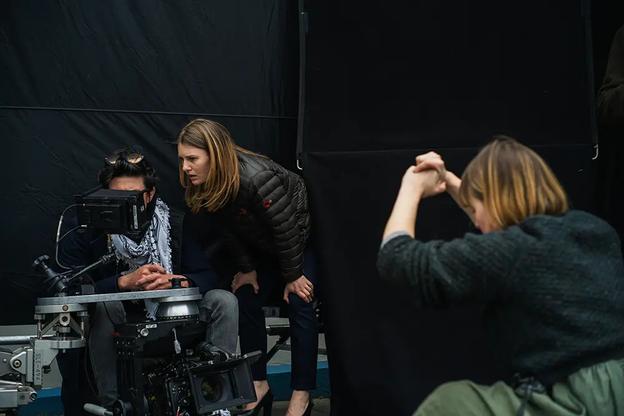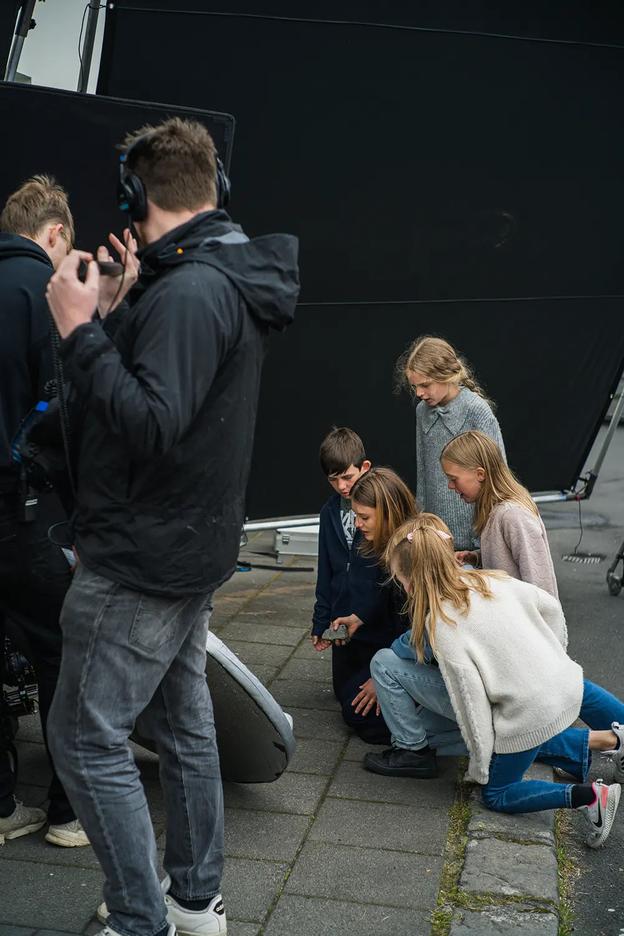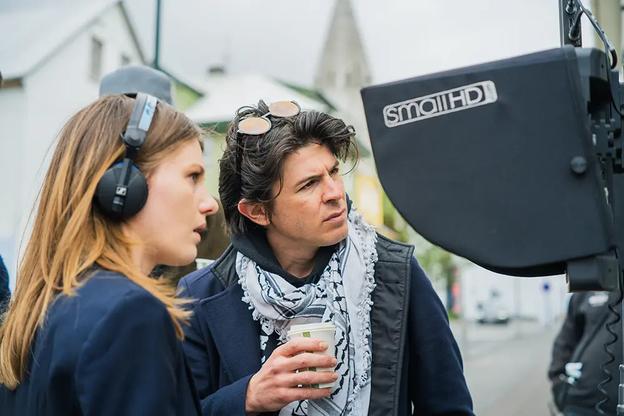07. august 2024
Gunnur Martinsdóttir Schlüter (Iceland)
Special Prize Festival de Cannes 2023 with film “Fár“





The film "FÁR" directed by Icelandic filmmaker Gunnur Martinsdóttir Schlüter, made waves at this year's Festival de Cannes. Our academy was directly involved in the festival and watched in admiration as this 5-minute narrative film was selected for the official section of the Festival de Cannes 2023. To be honest, it was a surprise for us because initially, I thought it would be a short film, given that most narrative films selected for the official section of Festival de Cannes tend to be longer, usually over 8 or 9 minutes. However, after watching the film, I must admit that I favored it as a potential winner. I narrowly missed that prediction, but "FÁR" did receive the Special Mention for the Palme d'Or at Festival de Cannes 2023.
Yes. Fár is a not so common word, or at least more an old fashioned word and it's meaning is somewhere between in a mess, confusion and chaos. The Icelandic word for birds is fuglar and we say fuglafár - directly translated bird-chaos for birds flock, or birds who are flocking. In the film a bird creates a lot of chaos in the protagonist's life, so the name kind of had a double meaning. I thought about translating it but didn't find any suitable translation. So I kept the original title, even if it can cause a bit of misunderstanding.
Yes. I've been living between Reykjavík and Berlin the last few years, or at least when this film was taking shape. Even if they're different vivant cities, both have changed in the last years due to the economic upswing which started in the late eighties (Iceland had then an economic crash in '08 but the mass tourism industry kind of saved us]. I think that the ruling neo - capitalism has brought many social problems, as in disconnection between humans and loneliness. Also I have the feeling that globalization and gentrification have made culture kind of flat. That flatness is what's going through the protagonist. I think this era is now coming to an end, something is changing.
No, that never came into question. Anna takes action, that is the driving force of the story. I think that one of her colleagues would not have taken action, they are to blind to the situation and their surroundings. Without the action this story wouldn't have existed. Actually the idea of the colleagues came much later than Anna, the main character. My first thought was she would just be sitting alone in the café watching society and then take action, but to get a bit more of her background story I brought in the meeting with the colleagues in the café.
No, actually I have never been a big fan of short movies, I think they are really a complicated format to master. But after Fár I've been watching more of them. But I do like to watch life and love when life brings up funny strange situations. I'm a collector of absurd situations, I write them down and really make life funny to live, they're all around.
I studied acting in Iceland and went as a guest student to the renowned theater university Ernst Bush in Berlin where voice lessons from Dr. Viola Schmidt who has been working with acting students for over forty years. When you act in a scene, you take and you give - you get an impression of what your colleagues give you and answer with an expression. Dr. Schmidt had noticed through the last years that students did easily express themselves, but they were less and less open to impressions - to let the will / information (or gift] from the other person on stage affect them. I thought this was very interesting and it is related to our ruling economy / society I mentioned above. We live in an overwhelming world, where we have or are able to see (google] everything. If you have seen everything, or if you are able to see so much that it gets both overwhelming and normal and nothing affects you anymore. That is something I felt myself. Since I learned this from Mrs. Schmidt, I get the most fascinated of people who in their adult years still get purely fascinated.
The kids were great. Most of them had been acting in school or theater groups and they were very excited being on set. Not to forget that my AD Siggi Kjartan, had a great threat to the group. They had their lines, but since they are supposed to talk without stopping I let them improvise. I think that may be the biggest challenge to get them to not say their lines out loud and probably on the right que but to let them be a bit free.
I was interested in two main themes. The lack of taking action. Kind of the ignorance of what's happening around you, a kind of disconnection. Both between people in a community but most of all disconnection with nature and death as part of a natural process. The other theme was the fine line of morality. The boy asking if he can kill the bird, as a real instinct question does can show the line between what we are and what we learn. For me, the end scene is very complex and I can't point out what the thought was behind it. I starred Anna myself and the turning head, both with shame and slightly arrogance shows her failure and attitude of trying as an individual to change something towards the group. It was very important to me that this turning head would be in the final cut.
I got the idea of doing this film when I was twenty two, or around ten years before I actually did it. I started writing the screenplay for real about two years before filming. I went to my friend Sara who is a producer and asked her what next steps would be and she liked the idea that much, that she wanted to produce the film. She asked then her colleague Rúnar Ingi if he would join. This project was not a priority project for the ones who did it, so we occasionally came back to it when we had time. We filmed for two days, and one day me and the DOP strolled around Reykjavík getting inserts. There were just auditions for the children, the other actors I asked directly. Us, the actors (since I'm one of them] met once to read the script over and talk about the situations and characters. Then I met the children separately and rehearsed their scene. We received state funding for about 7 million Icelandic Kronas (50 thousand USD], although the film did cost more.
This is actually the only point where me and my cinematographer Eli Arenson were not totally agreed on. I wasn't sure about the 4:3 aspect at first, I wanted to work more with the expanse. But I had ideas and inserts of skyscrapers (which did in the end actually not end up in the film] and Eli's vision of the 4:3 came from that. We decided to have it in 4:3 the night before we shoted and today I'm very happy about it.
Salaud Morriset contacted us after we were invited to Cannes. Few other distributors connected us, but me and my team connected the most with Salaud Morriset. They made a festival plan for us and is our main connection to the festivals.
I was very happy and satisfied when I received the award. These days I'm just looking inside of me, reading and getting inspiration from the world around me and asking me what my position toward all the happening is; Both in my local surroundings, the big world and, and asking me in what story is the urge to let my thoughts be heard. That said, I'm applying for script labs, since I'm always writing - if that can be considered as the next step in the industry. I'm also an actress, so I do have some upcoming acting projects.
Interview by Erik Jasaň
